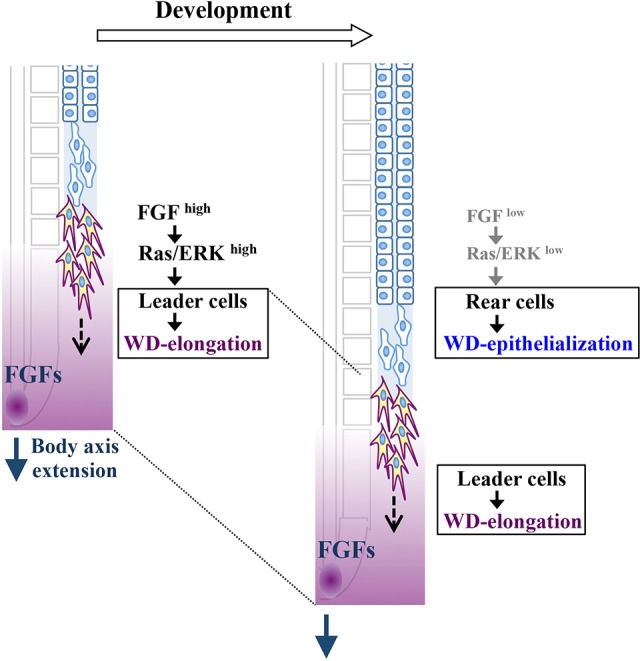Fig. 7.

Summary of the mechanisms underlying WD elongation as regulated by multiple types of cell and tissue coordination. WD leader cells are attracted to nearby L-IMM, and this attraction is mediated by FGF activities initially produced from the tail bud of the body (Dubrulle and Pourquie, 2004). As the body axis extends, the FGF-expressing area (purple) shifts caudally, underlying the coordinated elongation of the WD and body axis. FGFs act as a binary switch in cellular morphogenesis within the elongating WD: high FGF activity confers high motility on leader cells, whereas rear cells, which are progressively released from the influence of the FGF-positive region, undergo epithelialization. Collectively, this scheme highlights how a macroscopic change in body axis elongation is coordinately translated into morphogenetic changes at the microscopic level in terms of the chemoattraction of leader cells and tubule formation of rear cells, both of which progress posteriorly with a regular interval between them.
